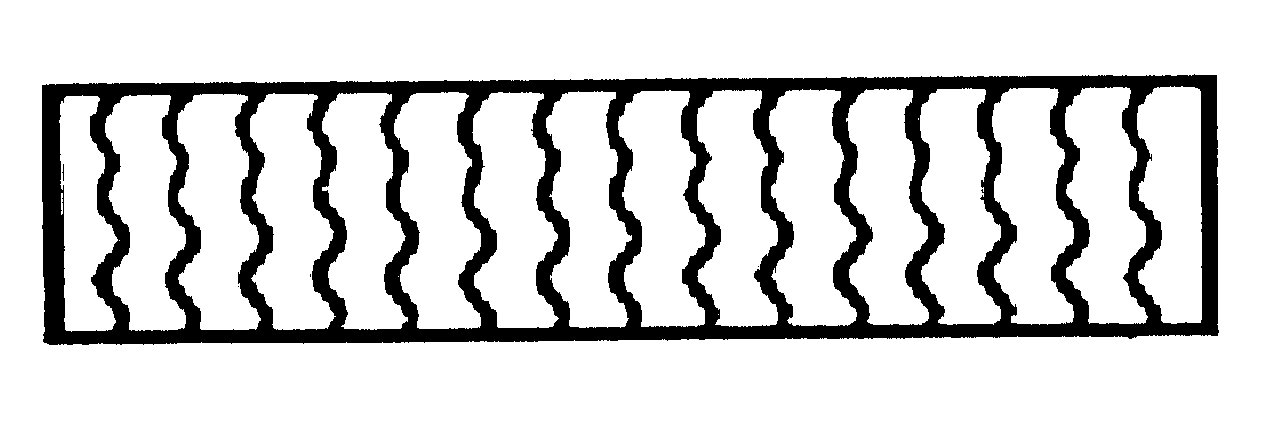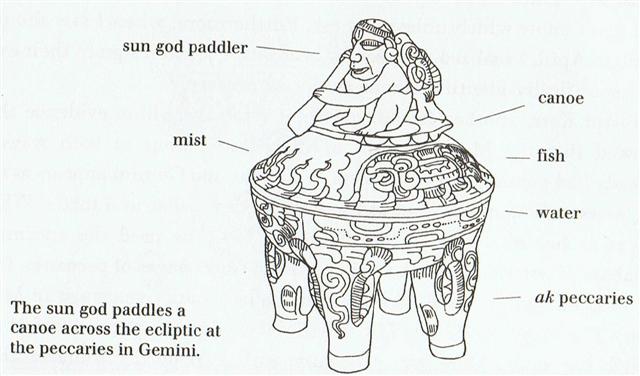|
A few preliminary
remarks and imaginations:
1.
The ika glyph type is a picture of a fish. But
this does not necessarily imply we should understand ika
glyphs to literally mean fishes. First of all it is necessary to
consider such facts as
īka also could mean the 'corpse of a man fallen in war' or a
'victim (wounded or killed), enemy who must be killed, person cursed
by a timo and destined to die' (Vanaga)
|
Timo
Title of those entrusted with ritual
duties. The timo īka were entrusted with putting
death spells on murderers to avenge the victims. The
timo to'a blessed and cast victory spells on
warriors. The timo rara koreha were entrusted
with drying corpses. Vanaga.
Mourning, grief, sorrow; (clappers
made of flat bones etimoika; when an islander is
working up his vengeance for the loss of a murdered
kinsman he puts on a feather headdress, goes about
behind the houses, and makes great yelling and rattles
the bones. G). Churchill. |
Some think īka
was a euphemism for a human sacrifice
to be offered to the gods (and also perhaps cannibalized upon). I
don't think so. Or rather: If it was so, then it was not the
original explanation, but rather a secondary application of the
primary īka concept.
Instead I believe in ancient times fishes alluded to the
heavenly bodies. After all, the sky is blue like the ocean and
therefore, presumably, there are fishes in the sky.
"The principal word for 'fish' in most Dravidian
languages is min, which has an ancient homophone meaning
'star', both probably derivatives of the root min 'to
glitter'."
"Fish are actually unable to close their eyes, and
the fact that 'when the fish sleeps it does not close its eyes' was
noticed by ancient Indians. The dot-in-a-circle similar to that
occuring among the trefoils of the Harappan 'priest-king“s' robe is
identical with the eye of the many small hare- and fish-shaped
amulets discovered on the lower levels of Harappa." (Parpola)
There is a dark blotch
looking like the head and long ears of a hare (or
rabbit) in the moon, which can account for the hare-shaped amulets,
and then the next step to stars as fishes is infinitesimal. Moon can
be seen also during the day, but the stars only during the night -
by the theory of correspondences equal to winter and the dark sea.
On Easter Island, with a free view to the horizon in all
directions, the heavenly bodies ascend in the east as if drawn up
like glittering fishes from the ocean.
|
The hare or rabbit (Lamat in Mayan) is a land animal, not a fish. The moon is important in determining the time of Easter. I wonder if the central sign in Ik indicates the moon:

Like Taurus the moon has 'horns'. And there may be a connection with un 'upright pole', because Easter is the time of procreation:
| Huki 1. Pole attached to the poop from which the fishing-net is suspended: huki kupega. 2. Digging stick. 3. To set vertically, to stand (vt.). 4. Huki į te mahina, said of the new moon when both its horns have become visible. Vanaga.
1. To post up, to publish. 2. To cut the throat (uki). Mq.: Small sticks which close up the ridge of a house. Ha.: hui, the small uniting sticks in a thatched house. Churchill.
Standing upright. Barthel.
M. Spit for roasting. Te Huki, a constellation. Makemson.
Hukihuki. 1. Colic. 2. To transpierce, a pricking. 3. To sink to the bottom. Churchill. |
Given the ancient wish for balance, not too cold, not too hot etc, there should be two opposing powers. In Libra this is visually expressed by a balance.

The balance in Libra has Virgo and Scorpio as opposing powers, female and male. Also Sagittarius is male, the sign of an arrow shows. Then comes Capricorn, high up in the 'mountain', followed by 'water' and 'fishes'.
There is an overall pattern in the zodiac, but how should it be read?
6 signs beyond Libra (autumn equinox north of the equator) is Aries (spring equinox), also a male sign. Moving one step ahead we have the males Scorpio and Taurus, followed by Sagittarius and Gemini. My method is similar to the '168-day method' of the Maya.
The 'water' extends from Aquarius to Aries, then comes 'land'. The change occurs in spring. Only during the first quarter a canoe is needed. There is no balance between water and land, and there is only one female zodiacal sign.
Furthermore, they have put Virgo on land, to be absolutely sure there will be no trouble. Moon (and Lamat) they have likewise ordered to the Marduk spring time. There is a well in spring.
Next page:
|
2. The sun and the stars are 'eternal', not closing their
eyes, whereas the moon is closer to us mortals, evidently having a life cycle
ending with her death. Though being reborn later again.
In the first half
of any life cycle vigour and strength is increasing, thereafter
things are going downwards. Therefore, a
fish going up (head
up) means the time of growing. Focus and interest as a rule is located
to the first part in life.
"The five stages of a
baby's development are: kaukau, puepe, tahuri, totoro, mahaga.
Kaukau = newborn baby's first hand and feet movements (kaukau
or kau). Puepue = said of a newborn baby when,
a few weeks old, it begins to distinguish people and objects:
ku-puepue-į te poki. Tahuri = of a new-born baby, to
move from side to side: ku-tahuri-į te poki. Totoro
= to crawl; ki totoro te poki, when the baby crawls.
Mahaga = baby when able to stand by itself." (Vanaga)
Another factor which must be considered is the fact that a 'fish'
going down always does so in the west, never in the east. But the
moon was anciently considered being born in the west and dying in
the west, contrary to all other heavenly bodies. Although the moon
sometimes was referred to as a hare (or rabbit) she was also often
symbolized by a fish in ancient cultures. Basically
the ika glyph type is a rising 'fish'. When we see an
upside down (or reversed) glyph in the rongorongo texts - e.g. a sinking 'fish' - it means
the opposite of the normal glyph. When moon is in the waning phase
she is dying. |
I may have been unfair - what is there to describe in the sea? Anything dumped overboard just vanishes. To describe it is quickly done.
We should notice, however, the presence of two female signs in the week: Moon and Venus. The week is the domain of the moon, while the zodiac is solar in character. There are also two rabbit's ears visible in the Moon.
The week has another kind of structure than the solar zodiac:
| |
Moon |
|
|
Jupiter |
|
| Sun |
|
Mars |
Mercury |
|
Venus |
| normal (water) |
reversed (land) |
Here Saturn is the absence of order, referring both to Moon and Jupiter, it is 'down in the sea' = 'down in the earth' = not visible, pale as a ghost.
Sun and Mars, the 'fiery' ones, are balancing the unstable watery Moon, while Jupiter guards the equally unreliable Mercury and Venus.
Next page:
3. Victims offered to the gods are immediately going
up into the sky, where the gods are dwelling, and there
they become new 'star-fishes'. I believe that is the reason why human sacrifices were
called
īka.
"In ancient Mexico they
used to strike a hard physical blow to the body of the victim,
and then the soul of the victim was believed to ascend directly
to the heavens, sidestepping the perils of the underworld."
(Hancock)
Another example of the belief of dead people
being 'fishes' is a face-powder palette in slate from old Egypt.
The wavy lines on the body of the fish are not scales, they
illustrate waves and symbolized water.

But
these waves are written vertically in the hieroglyph for water pools:

The
fish is therefore swimming upwards. This type of fish has its
eggs in its mouth and it therefore symbolized rebirth - when the
small fish were leaving its mouth. The Egyptians believed that a dead
person in his afterlife would arise from the water like the sun
in the east. (Wilkinson)
|
The cycle of life means revolving from world to underworld and back again for eternity, following the pattern of the moon.
When an īka victim is taking a short-cut up into the sky, he follows the path of the sun instead. He is a male, he is 'fiery' and in the sky 'fires' do survive - they are not 'devoured' by Saturn. When Capricorn walks in the mountain he is close to heaven and can avoid the sea. From the mountain top he must fly.
Yet even the sun is revolving, following the pattern of the moon. How does he survive? By moving in the zodiac he skims the water:





